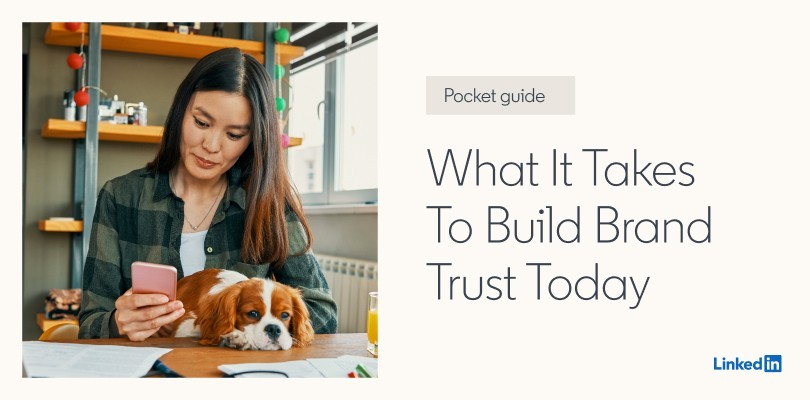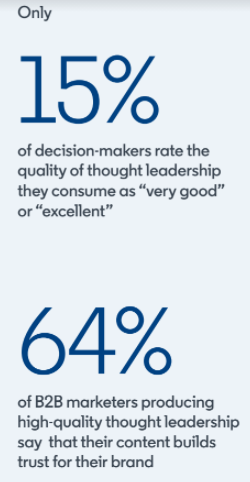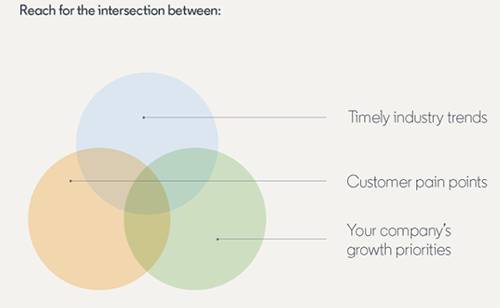For Building Brand Trust, Here’s Where Today’s Marketers Should Focus
Trust is in peril. This is something that most marketers are keenly aware of. According to the Edelman Trust Barometer 2021, trust in all four major institutions (Government, Media, NGOs, Business) declined between May 2020 and January 2021. Edelman describes the situation as “an epidemic of misinformation and widespread mistrust of societal institutions and leaders around the world.”
Business is the only one of those four institutions that remains trusted overall. As such, brands and their marketers have a critical opportunity to build upon this confidence, with potentially long-lasting impacts.
Our latest guide "What it Takes to Build Brand Trust Today" details how you can capitalize and take advantage of this moment.
Brand Trust: A Strategic Imperative
Trust is not a straightforward metric that shows up in your Google Analytics sheet. It isn’t measured or tracked as clearly as, say, brand awareness or customer retention. But that doesn’t mean trust is not a key contributor to those and virtually all other aspects of your strategy.
Author Rachel Botsman, who wrote the book "Who Can You Trust?," says that “real trust is a confident relationship with the unknown.” This framing makes the concept feel more tangible from a B2B sales and marketing standpoint; if you’re asking customers to buy a new product or service, particularly in the midst of uncertain market conditions, it is vital to build up confidence that your company is the right partner for venturing into the unknown.
Setting objectives and achievable goals around brand trust requires moving from general to specific: What are we asking people to trust our brand with, and to trust our brand to do?
When it comes to establishing trust with your customers, there are two dimensions worth focusing on:
- Capability Trust: Derives from perceptions of a brand’s competence and reliability, whether it has the knowledge and resources to do what it says it will do — and whether it consistently comes through when needed.
- Character Trust: Derives from people’s perceptions of a brand’s empathy and integrity, whether they feel that the brand understands and cares about them, and whether the brand’s interests and intentions align with their own.
Successful marketing departments consistently strive to solidify both facets of brand trust. Here’s how you can make positive strides in each category
Building Capability Trust for Your B2B Brand
If you’re scaling a mountain, you’ll probably want a sherpa with a proven track record who shows demonstrable skills when it comes to helping climbers safely reach the summit. The same dynamics are at play when companies are making pivotal decisions around purchasing solutions.
In large part, perceptions of capability trust are driven by authentic signals from your customers and community: user reviews, word-of-mouth, advocacy, and so on. But marketers can take active steps to support these perceptions.
The most powerful tool at your disposal for this purpose? Thought leadership content. Two facts crystallize just why this is a crucial opportunity for marketers:
Thought leadership boosts brand credibility
Research conducted by Edelman and LinkedIn found that 68% of B2B decision-makers say high-quality thought leadership increases their perception of an organization’s capability, and the same percentage say it increases their trust in the organization. (As we’ve laid out, the two go hand in hand.) Fifty-nine percent say thought leadership content is the most trustworthy way to assess business capability.
High-quality thought leadership in short supply
While executive and decision makers yearn for legitimately impactful thought leadership, they’re having a hard time finding it. Only 15% of respondents in the survey rated the quality of thought leadership they consume as “very good” or “excellent.”
How can marketers escape the sea of undifferentiated mediocrity? The Flywheel of B2B Thought Leadership, developed by our friends at Edelman, offers a guiding blueprint. The Flywheel consists of six elements:
- White Space
- Relevance
- Vision
- Trust
- Brevity
- Attribution
Ultimately, capability trust is cultivated through consistency. Keep showing up for your customers, delivering dependable thought leadership, and adhering to a clear message. Brands should invest in consistency and take a long-term view.
Learn more about putting these tenets into practice with the 5 Principles of Growth in B2B.
Building Character Trust in Your B2B Brand
Put simply, character trust is about living your values as a brand, and showing customers you stand for more than just making money. Do so by zeroing in on two essential qualities:
- Empathy: Take the necessary steps to understand your customers and their situations. Stay on top of fast-changing needs and priorities. Make listening as much a part of your strategy as broadcasting.
- Integrity: We define integrity as how well a brand’s statements about character are substantiated through consistent behavior. In other words, it’s about walking the walk.
Whereas capability trust is largely enhanced by highlighting your business, character trust is best supported by highlighting the human beings behind the brand. They are, after all, the character of your company.
A few standout opportunities:
Take a stand on issues that matter to your audience and your employees. Demonstrate your alignment with them on things they care about. Staying silently in the name of risk aversion is, ironically, an increasingly risky play. As CMO Sangram Vajre recently told us, “If you don't stand for something, people are going to construe and recognize that you stand against something.”
Enlist your employees as advocates and subject matter experts. Not only does this contribute to capability trust by showing customers your organization is staffed by people who know what they’re talking about, it contributes to character trust by attaching faces to your company’s expertise and culture.
Mobilize your executives as thought leaders. We’ve discussed the value of thought leadership generally for building capability trust, but executive thought leadership specifically is a powerful conduit for character trust. The Edelman Trust Barometer found that 86% of respondents expect CEOs to speak out publicly on important societal issues, and 68% believe CEOs have a responsibility to step in when the government comes up short on these issues. Learn about the three cornerstones of executive thought leadership.
Engage in a Trusted Environment
Whether you’re focused on capability trust or character trust, or both, the surrounding context matters. You’ll want to engage customers in settings where their mindset and intentions align with what you’re trying to accomplish. In this respect, LinkedIn can be an immensely valuable place to invest.
In 2020, Business Insider and eMarketer’s Digital Trust Report ranked LinkedIn as the most trusted social media platform for a fourth consecutive year.
By putting the above strategies into action and meeting your customers (or future customers) where they’re at, on a platform where they are ready to do business, you’ll be on the path to securing powerful brand trust that leads to sustained business success.
Ready to chart your course? Learn more about fortifying your brand reputation by exploring our course in LinkedIn Marketing Labs: Using LinkedIn for Brand Awareness.







